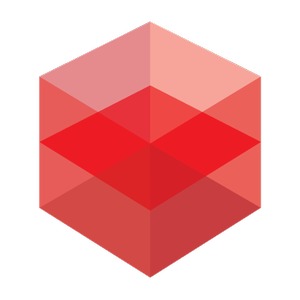Table of Contents
Introduction
Redshift is a production-quality, GPU-accelerated renderer. Traditionally this type of rendering was done on CPUs, but graphics processors (GPUs) are ideal for highly parallel tasks like this – and it is easier to fit multiple video cards in a single computer, to boost performance, than multiple CPUs.
When we first started to run tests for a short series of articles on Redshift, the version available was 2.5.72. However, mid-way through our testing, a new version was released: 2.6.11. This was exciting because it brought support for NVIDIA's latest GPU architecture, Volta, making the Titan V a viable option for Redshift. But it also begged the question: has rendering speed been improved as well?
Test Setup
To see if there has been any performance improvement from Redshift 2.5.72 to 2.6.11, we ran the benchmark included in both demo versions of Redshift with 1, 2, 3, and 4 NVIDIA GeForce GTX 1080 Ti video cards. This benchmark uses all available GPUs to render a single, still image – and measures how long the whole process takes. Comparing those times will show if render speeds have changed.
For our testbed, we wanted to use a high clock speed processor so that the differing Redshift versions could really shine. We also needed a platform that would support as many video cards as possible in a large tower workstation. Given that combination of goals, the configuration which made the most sense was Intel's Xeon W – specifically, the W-2125 processor on a Gigabyte MW51-HP0 board. That provided the right PCI-Express slot layout for up to four GPUs, and the Xeon W-2125 runs fast: 4.0GHz base and up to 4.5GHz turbo.
If you would like full details on the hardware configuration we tested on, just click here to expand a detailed list.
| Testing Hardware | |
| Motherboard: | Gigabyte MW51-HP0 |
| CPU: | Intel Xeon W-2125 4.0GHz (4.5GHz Turbo) 4 Core |
| RAM: | 8x Kingston DDR4-2666 32GB ECC Reg (256GB total) |
| GPU: | 1 – 4 x NVIDIA GeForce GTX 1080 Ti 11GB |
| Hard Drive: | Samsung 960 Pro 1TB M.2 PCI-E x4 NVMe SSD |
| OS: | Windows 10 Pro 64-bit |
| PSU: | EVGA SuperNova 1600W P2 |
| Software: | Redshift 2.5.72 and 2.6.11 Demo Benchmarks (Age of Vultures scene) |
Benchmark Results
Here are line graphs showing the Redshift benchmark render times with 1, 2, 3, and 4 of the GeForce GTX 1080 Ti 11GB graphics card:
To better see the difference shown above, here is a chart showing the number of seconds saved in 2.6.11 compared to 2.5.72:
Or to show it as a percentage increase instead of raw time:
Analysis
The first graph above shows that there is a clear, though small, difference in performance between Redshift 2.6.11 and the older 2.5.72. It can be a little confusing to view in terms of just time, though, so the presentation of the improvement as a percentage in that last graph is helpful. As seen there, render times have improved by approximately 1.8 to 2% in the latest version of Redshift. Nothing earth-shattering, but not bad either.
Conclusion
In addition to opening up Redshift to Volta-based GPUs, like the Titan V, version 2.6.11 has also brought with it a small increase in render speeds across the board. Whether you want to try a Titan V or prefer to stick with less costly video cards, updating to the latest version of Redshift should improve performance for all users.
Puget Systems offers a range of powerful and reliable systems that are tailor-made for your unique workflow.

